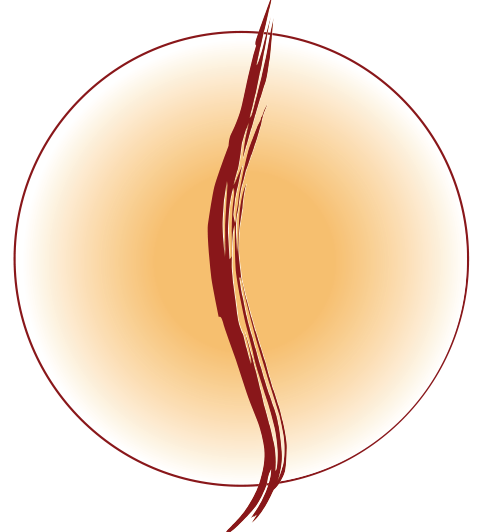CVCAC © 2015-2018 | PRIVACY POLICY
CVCAC News
The Healing Power of
Acupuntcure Points READ MORE

7170 Chagrin Road
Chagrin Falls, OH 44023
CHAGRIN VALLEY CHIROPRACTIC & ACUPUNCTURE CENTER
7170 Chagrin Road
Chagrin Falls, OH 44023

Dr. Ivan Nassif, MS, DC, LAc
(440) 247-5383
Reviving the Spine's
Ability to Function READ MORE

Acupuncture Frequently Asked Questions
Does it hurt?
Many people would describe acupuncture as being painless, although some may experience a sensation similar to a mosquito bite or bee sting upon insertion of the needle. This sensation is usually transient lasting only a few seconds. Dr. Nassif uses filiform (link to explanation of these needles below) acupuncture needles which part the skin instead of tearing it (as a needle used to give a shot would do).
Many patients find acupuncture to be a relaxing experience, and often fall asleep during treatment. Others describe feeling a rush of energy. Some may describe a dull ache in areas around where the needles are inserted. Most people find acupuncture to be a pleasant experience.
What conditions can acupuncture treat?
The lists below are to give you an idea of the broad scope of acupuncture. Acupuncture is effective in treating virtually any symptoms or condition, it’s applications are not limited to those listed here.
The World Health Organization (WHO) has listed the following symptoms, diseases and conditions that have been shown through controlled trials to be treated effectively by acupuncture:
How long does an acupuncture treatment take?
The initial visit will last approximately 1 to 1.5 hours. During this time a complete Oriental medicine examination will be performed which will include, information gathered about your chief complaint(s), past health history, general constitution, pulse taking, and tongue analysis.
Your examination may also include: taking of vital signs, range of motion examination, neurological examination, and orthopedic examination.
Return visits should last approximately 45 minutes.
How long are the needles left in?
How many needles are used?
A typical treatment will last (time with needles in) approximately 28 minutes (the time it takes for the qi in one’s body to cycle through the body once). This time will be adjusted according to the individual needs of the patient. Typically 10-20 needles are used for a treatment; again this may be modified to meet the individual needs of the patient.
• low back pain
• neck pain
• sciatica
• tennis elbow
• knee pain
• shoulder pain
• sprains
• facial pain
• headache
• dental pain
• TMJ syndrome
• arthritis
• nausea
• morning sickness
• epigastralgia
• stroke
• hypertension
• colic hypotension
• depression
• ulcers
• gastritis
• leucopenia
• dysentery
• dysmenorrhea
• post op pain
• effects of chemotherapy
Acupuncture is also
effective for:
• Fertility
• PMS
• Menopause symptoms
• Quitting Smoking
• Addictions
• Weight Loss
• Anxiety
• Facial Rejuvenation
How big are the needles?
Acupuncture needles vary in size but are typically small and very thin. The typical needle used is approximately 1 inch in length (including the handle) and is .25mm in thickness (32 gauge). To get a sense of the thickness of the average acupuncture needle, consider this, 1-2 acupuncture needles can fit inside the “barrel” of a needle used to give a flu shot.
Dr Nassif uses filiform acupuncture needles which “part the skin” rather than tear at it like a normal hypodermic needle would. The difference is in the design of the acupuncture needles. A hypdodermic needle is essentially a hollow barrel cut at an angle with a jagged edge which tears at the skin. In contrast a filiform acupuncture needle is thinner and is comes to a solid point for more gentle insertion.
What other acupuncture techniques might be used besides needles?
Aside from needles “acupuncture” may involve adjunctive therapies such as the use of very gentle electrical stimulation on the needles to provide a continuous stimulation of point(s). Also, moxabustion, or the burning of moxa (a Chinese herb; the leaves of the mugwort plant) may be performed. This practice uses the heat of the burning moxa to stimulate the meridian point to increase qi flow. Other modalities may include: fire cupping – where glass cups are suctioned on the skin to help the movement of qi or blood as well as draw out disease evils. Plum blossom needling also may be employed which is a technique in which a set of seven small needles at the end of a small stick or tapped lightly on the skin to improve circulation of qi and blood.
How many times will I need to be treated?
Generally a course of acupuncture treatments consist of 10 visits/treatments. These visits can be on consecutive days, as is usually the case in China (5 visits a week for 2 weeks) or as more commonly occurs in the United States 1 visit a week for a period of 10 weeks. It may take more treatments or less treatments depending on your personal needs. Your condition will be re-assessed on every visit and alterations to your treatment plan will be made accordingly.
When will I notice a change in my condition?
Usually patients leave in less discomfort and are more functional than when they walked in. For some, positive effects are apparent immediately. For others, the effects are too subtle to perceive, especially in the beginning of treatment. It is very important to give acupuncture a chance to work. It works on a cumulative effect and each successive treatment is more powerful. After 5 to 10 treatments the improvements become more and more apparent.